Introduction
Dramatic performances have been prevalent in many parts of the world for a long period of time. These artistic performances entail several aspects that reflect on a community’s point of view regarding certain societal elements. African American theater is a typical example of dramatic art presentations that serve to highlight on a society’s weaknesses and strengths (Rubin, 2000).
African American theater basically stemmed from American theater which is believed to be relatively new. The black population in America has basically strived to ensure that their dramatic performances get the required attention. It is believed that black American performers ventured into the field as early as 1820, but their work never attained sufficient recognition (Hay, 2004). Black artists generally performed, created, and staged shows for audiences that were not entirely black.
It is evident that black theater is currently facing challenges although it is regarded as a remarkably transformed field.
Challenges faced by African American Theater
These challenges occur through the various constraints faced by companies that seemingly work hard to promote this form of art. Most companies that aim to promote black performances rarely survive for a long time, thus, they close down for various reasons. For instance, it is hard to find such companies employing black participants in all the stages of production.
In simpler terms, the directors, producers, and performers are usually a mixed lot in terms of their racial affiliation. Nevertheless, there is every reason to state that African American theater has really improved as evidenced by intensified comparisons between the past and the present (Hay, 2004). The African Groove Theater stands out as one the first companies to appreciate African American theater.
Through William Brown and Hewlett James, who were also founders of the company, African Groove Theater offered black performers a chance to showcase their talents. Drama of King Shot Away was showcased to a mixed audience in 1823, but white people were not amused (Hay, 2004).
They basically opposed the idea of an African American theater and even executed several attacks that eventually led to its closure. The Sambo is a typical manifestation of racial issues during these periods and black people disliked such depictions. During this period, white actors could perform stereotypical black roles by wearing black faces. White audiences generally attended these performances as a way of mocking the Africans (Rubin, 2000).
Black actors during this period also performed African American roles in the performances, but they adhered to the prevalent white ideas about these particular roles. For instance, black actors could wear black faces in their performances and they also subliminally embraced racial depictions that were commonly performed by white artists.
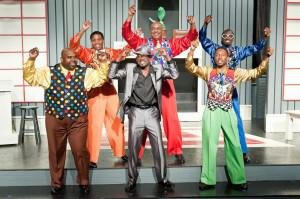
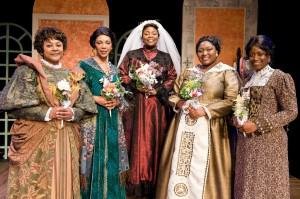
The evolution of black theater
Black theater is constantly evolving as evidenced by the journey travelled through the years. Black theater made a bigger impact in the 1930’s, especially during the Harlem Renaissance (Hay, 2004). Grandison Lewis stands out as the first black actor and playwright to feature on Broadway. Others included Loraine Hansberry and S. Ntozake who appeared later on.
They overcame many challenges that were meant to sabotage the progression of African American Theater. These artists tried as hard as they could and their message was eventually heard. The artists currently command enough respect among the black population for their efforts. It is evident that despite the challenges, African American arts have become reliable channels of entertainment in America.
Black people in America have basically subdued several forms of subjugation in the community and this can be attributed to the African American Theater. They include human rights issues, political matters, and residential complications. Black films played a great role in changing the attitudes of the entire community towards black people (Rubin, 2000). Apart from being denied an opportunity to share drinks from the same source with white people, African Americans could not easily feature on television.
However, the persistence exemplified by black actors ensured that they started featuring on television without restrictions from the society. The stage, therefore, became a major platform through which black people expressed their sorrow, oppression, and other vices that were perpetrated by white people. Acting became the fundamental way of enduring the pain that was inflicted on black people by the White population.
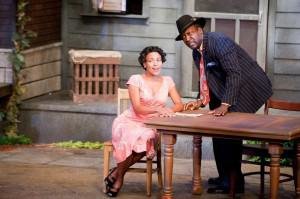
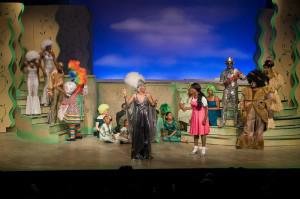
Black Theater today
Today, African American Theater is a core component of American theater. Black Theater basically holds that the issues which are shared emanate from human stories and nothing else. This implies that the cultural affiliation and background that an individual has, does not matter because human conditions like love and struggle are usually at play. In other words these are universal themes that affect each and every individual.
However, these institutions require lots of support in order to maintain and boost their importance in the society. Some theater institutions have opted to ensure that black theater lives forever. This is done through supporting and educating the artists. The Ensemble Theater, based in Houston, is an example of institutions that currently promote African American Theater.
Urban theater has also emerged on the scene and it constitutes a multi-billion dollar industry (Elam, 2000). Its appearance has been a thorn in the flesh for black theater and its survival. Urban theater flourishes because unlike black theater, it has all the funding and it consists of fewer stereotypes. Black theater has come a long way, but many challenges are still evident.
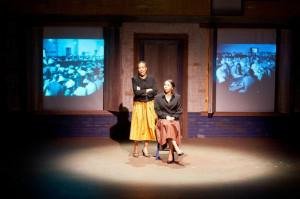
References
Elam, J. (2000). African American Performance and Theater History: A Critical Reader. Oxford: Oxford University Press
Hay, S. (2004). African American Theatre:An Historical and Critical Analysis. Cambridge: Cambridge University Press
Rubin, D. (2000). The World Encyclopedia of Contemporary Theatre: The Americas. New York City: Routledge.